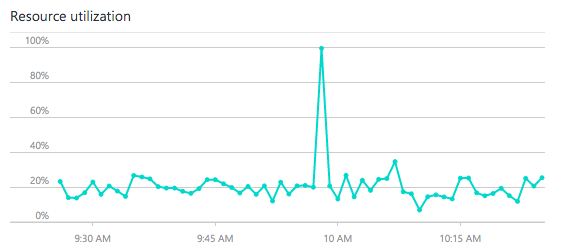Reinventing the System.Web.Optimization wheel with gulp
For a long time, I was using the standard bundling and minification System.Web.Optimization framework to deliver bundled and minified JavaScript and CSS to users of our app. In one of Azure's more frustrating changes, the 'In Role' cache was removed from the Cloud Service offering. The only cache choice now is Redis. Which is great, but it caused us some infrequent problems with bundles getting "stuck". We'd have to run a console application to clear out all of the bundle information in Redis whenever that happened.
We had need for a better front end build anyway as we started to explore replacements for angular (e.g. Aurelia) so decided to add bespoke bundling and minification. The actual implementation is more complex than what I'll show here because the code runs 2 'brands' (sites), each in 3 different countries. Let's assume the code runs one brand in one deployment instead!
To avoid this becoming a code dump, I'll just show the VersionedBundleFileMapper:
This class loads the config at the supplied path. This is the rev-manifest json file created in the gulp task. The location of this file is passed in when the BundleManager is configured (at app start up):
The rev-manifest.json is just a map of files with the revision in the name to the raw file name.
We had need for a better front end build anyway as we started to explore replacements for angular (e.g. Aurelia) so decided to add bespoke bundling and minification. The actual implementation is more complex than what I'll show here because the code runs 2 'brands' (sites), each in 3 different countries. Let's assume the code runs one brand in one deployment instead!
Config
The bundles are configured in a file called "bundles.js". This file exports a single array of objects each defining a bundle.
module.exports = [
{
"name": "primary-bundle.js",
"files": [
"content/js/file1.js",
"content/js/file2.js"]
},
{
"name": "primary-bundle.css",
"files": [
"content/css/file1.css",
"content/css/file2.css"
]
}
]
This defines a primary-bundle.js JavaScript bundle containing two files and a similar CSS bundle.
Gulp file
The gulp file takes this configuration and bundles the files and minifies them. It looks like this:
var gulp = require("gulp"),
concat = require("gulp-concat"),
cssmin = require("gulp-cssmin"),
uglify = require("gulp-uglify"),
merge = require("merge-stream"),
bundles = require('../bundles.js'),
paths = require('../paths'),
rev = require('gulp-rev'),
footer = require('gulp-footer'),
rename = require('gulp-rename'),
cleanCss = require('gulp-clean-css');
var regex = {
css: /\.css$/,
js: /\.js$/
};
gulp.task("bundle-all", ["bundle"], function() {
var jsTasks = getBundles(regex.js).map(function (bundle) {
return gulp.src(bundle.files)
.pipe(footer(";")) // Ensures scripts are isolated
.pipe(concat(bundle.name))
.pipe(uglify())
.pipe(rev()) // adds a revision to the file name
.pipe(gulp.dest(paths.bundleOutput));
});
var cssTasks = getBundles(regex.css).map(function (bundle) {
return gulp.src(bundle.files) // rebases the relative paths in the css files to the output directory.
.pipe(cleanCss({
rebaseTo: process.cwd() + "/" + paths.bundleOutput
}))
.pipe(concat(bundle.name))
.pipe(rev()) // Adds a revision to the file name
.pipe(gulp.dest(paths.bundleOutput));
});
return merge(jsTasks)
.add(cssTasks)
.pipe(rev.manifest()) // Generates a manifest file
.pipe(gulp.dest(paths.output));
});
function getBundles(regexPattern) {
return bundles.filter(function(bundle) {
return regexPattern.test(bundle.name);
});
}
There's another file "paths.js" which just has a bunch of properties for the paths to interesting places. E.g. source file locations and the output directories.
This task bundles both the css and javascript files and uses the gulp-rev plugin to add the revision to the file name. The manifest file this creates is then parsed later when rendering bundles in the HTML.
Rendering the bundles to the HTML
The MVC views have no knowledge of what goes on. They simply use an HTML helper to render the tags:
public static class Assets
{
private static readonly string ScriptFormat = "<script src=\"{0}\"></script>";
private static readonly string StyleFormat = "<link href=\"{0}\" rel=\"stylesheet\"/>";
public static IHtmlString RenderScript(string path)
{
var bundlePath = $"{path}.js";
return new HtmlString(
string.Join(
Environment.NewLine,
BundleManager.GetRenderableAssetsForBundle(bundlePath)
.Select(f => string.Format(ScriptFormat, f))));
}
public static IHtmlString RenderStyle(string path)
{
var bundlePath = $"{path}.css";
return new HtmlString(
string.Join(
Environment.NewLine,
BundleManager.GetRenderableAssetsForBundle(bundlePath)
.Select(f => string.Format(StyleFormat, f))));
}
}
Used like this:
@Assets.RenderScript("primary-bundle")
This helper uses the BundleManager to get a list of files:
public static class BundleManager
{
private static readonly object Locker = new object();
private static IBundleFileMapper fileMapper;
public static IEnumerable<string> GetRenderableAssetsForBundle(string bundlePath)
{
return fileMapper.GetBundleFiles(bundlePath);
}
public static void Initialize(string manifestPath, string bundleConfigPath)
{
if (fileMapper != null)
{
return;
}
lock (Locker)
{
if (fileMapper != null)
{
return;
}
#if DEBUG
fileMapper = IndividualBundleFileMapper.Create(bundleConfigPath);
#else
fileMapper = VersionedBundleFileMapper.Create(manifestPath);
#endif
}
}
}
Which in turn uses an IBundleFileMapper:
public interface IBundleFileMapper
{
IEnumerable<string> GetBundleFiles(string bundleName);
} To avoid this becoming a code dump, I'll just show the VersionedBundleFileMapper:
public class VersionedBundleFileMapper : IBundleFileMapper
{
private const string BundleFolder = "/dist/bundles/";
private VersionedBundleFileMapper()
{
}
private IDictionary<string, string> currentMappings;
public IEnumerable<string> GetBundleFiles(string bundleName)
{
if (string.IsNullOrWhiteSpace(bundleName))
{
throw new ArgumentException($"Unknown file name in ${bundleName}");
}
if (!currentMappings.TryGetValue(bundleName, out string versionedFileName))
{
throw new ArgumentException("${bundleName} is not a known bundle.");
}
return new[] { $"{BundleFolder}{versionedFileName}" };
}
public static VersionedBundleFileMapper Create(string path)
{
string config = File.ReadAllText(path);
return new VersionedBundleFileMapper
{
currentMappings =
JsonConvert.DeserializeObject<ConcurrentDictionary<string, string>>(config)
};
}
} This class loads the config at the supplied path. This is the rev-manifest json file created in the gulp task. The location of this file is passed in when the BundleManager is configured (at app start up):
BundleManager.Initialize(
Server.MapPath("~/dist/rev-manifest.json"),
Server.MapPath("~/gulpBuild/bundles.js")); The rev-manifest.json is just a map of files with the revision in the name to the raw file name.

Comments
Post a Comment